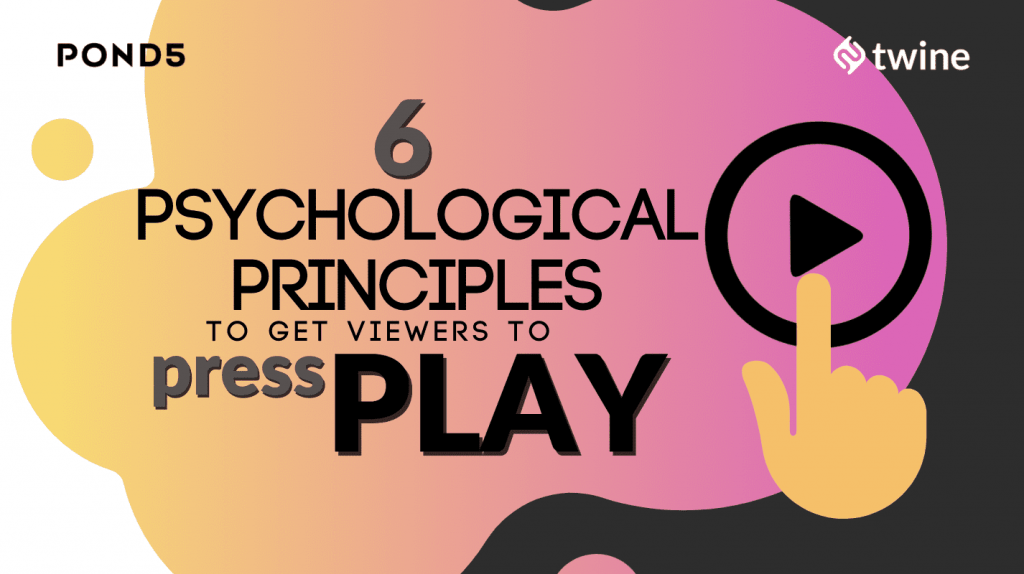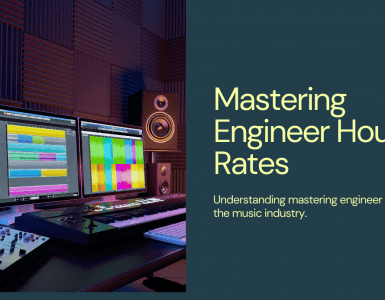
In the internet age, being a content creator can sometimes feel like you’re at a SumoWrestler convention – constantly getting crowded out of the arena by bigger players. The main reason this may be happening is that you aren’t using the 6 main psychological principles to your advantage…
Doing this will mean you’re creating human-centered content that people will want to watch. Moreover, dare we say, (we see you, marketers!), your videos can even successfully persuade audiences to click, or buy, after watching.
You – yes, you – can be a content legend.
Here are 6 ways to create what the brain is wired to watch.
1. Curiosity
George Lowenstein’s information gap theory of curiosity stated that “curiosity lies in the gap between what we know and what we want to know“.
Those gaps are like little mosquito bites – constantly at the forefront of our minds, no matter what we’re doing. This positions curiosity as a sort of primal drive in humans, making them one of the key psychological principles.
The concept has physical evidence too. One recent study showed a curiosity-induced activity taking place in the basal ganglia (a brain structure associated with motor control, emotion, and behavior). Afterward, the scientists concluded that curiosity is a manifestation of a raw appetite for information, where a small amount primes a hunger for more.
Therefore, a hook that leaves viewers wanting more is likely to lead to longer watch times. 360 VR scenes are a super engaging tactic to be utilized, as they reveal more as they move. You could also build intrigue with a suspenseful music track, or pique interest with clever copy in a title sequence.
2. Emotion
Turns out, the part of the brain responsible for decisions is also primarily associated with emotions. Here’s where we meet the amygdala: foiling attempts at logical decisions, since forever.
That’s why the most persuasive marketing videos tend to evoke real emotion in viewers. Your content should always start with a feeling.
According to Harvard Business Review in a study on viral videos, the most popular clips make viewers feel one of the following emotions:
- Curiosity
- Amazement
- Interest
- Astonishment
- Uncertainty
- Admiration
For instance, positive emotions are commonly conveyed with upbeat music, energetic editing, vibrant grading, and brighter exposures. However, the beauty of human emotion doesn’t discriminate between ISO’s, F-stops, or anything else! For some inspiration on showcasing a variety of emotions, visit our Emotion collection now.
3. Story-telling
Mirror neurons, a type of brain cell, are the video creator’s best friend. Why? They facilitate emotional connection with a performer. How? They are activated in me, Dan, when I perform an action.
They are also activated in me, when I watch someone else (Jimothy) performing that same action! So on a cellular level, I understand Jimothy’s emotions and sensations as if I were experiencing them myself- and, Jimothy has his own mirror neurons to sense mine too.
These cells facilitate empathy, and help viewers connect to the people whose stories unfold on screen!
Ramachandran explains that “audience members share a direct neural experience with artistic creations. Of course, empathetic engagement has always been central to artistic creation and experience, only now that the neural mechanisms have been revealed they are fair game for artistic exploration.”
So, will you take up that charge? Knowing that we are hardwired for empathy, you can leverage these findings by creating stories featuring authentic, relatable people, or even go wild with a bit of anthropomorphism.
Our Reunited and #mood curated collections are good places to start.
4. Editing
One of the psychological principles most people forget about is editing. Scene selection, transitions, and intuitive pacing can dramatically affect various areas of the brain, whether you realize it or not.
Fascinating evidence of this was provided at the 2014 Academy event “Movies in Your Brain: The Science of Cinematic Perception,” where cognitive scientists and filmmakers gathered to explore how viewers process images, events, and stories.
At the event, clips were played for an audience, and responses were recorded. Results showed that psychological tension mounted when a scene continued without cutting away for an extended period of time.
Interestingly, Black Swan sequences produced results that were compared to a schizophrenia-like state, with the cognitive and emotional centers of the brain operating dramatically in and out of sync.
How will you use transitions and cuts to emphasize your message? Our After Effects transitions have some ideas for you.
5. Color
One of the shiniest jewels in the creator’s crown, color captures attention, provides information, conveys an attitude, and is an emotional cue in its own right. All of these properties pack a hefty punch in your communications.
According to one color study, people make up their minds within 90 seconds of their initial interactions with either people or products. About 62‐90% of that assessment is based on colors alone!
So whatever the purpose of your video, you’ll be wanting to dress it up in its Sunday best, considering vibrance, texture, shade, and context. Here’s a useful link to brush up on your color theory, for that cognitively curated edge.
At Pond5, we’re HUGE on hues. Check out these pigment-based pages to get those juices flowing.
• Golden Hour
• Lush
• Colorless
• Pantone Color Of The Year
6. Music
Melodies, harmonies, bass lines, drum beats, and the like constitute a heady cocktail for the brain. As it turns out, music is literally addictive.
Catchy tracks stimulate the nucleus accumbens, the region playing the biggest role in addiction due to its concern for reward-seeking. Great songs increase the release of dopamine, in much the same way that cocaine does.
We make sure we have a steady supply of pleasure-inducing, royalty-free music tracks, and sound effects to keep your audience hooked.
There you have it, 6 psychological principles to get viewers pressing play (or at least not the skip button.) You should be well-armed to make memorable, cognitively enhanced, and even addictive content… or at least sound smart at dinner parties.
Ready to get hired? At Twine, we have dozens of top-quality jobs being posted each and every day. From design to marketing, development to copywriting – there’s a job ready for your skills. Join the marketplace of creative talent here.








